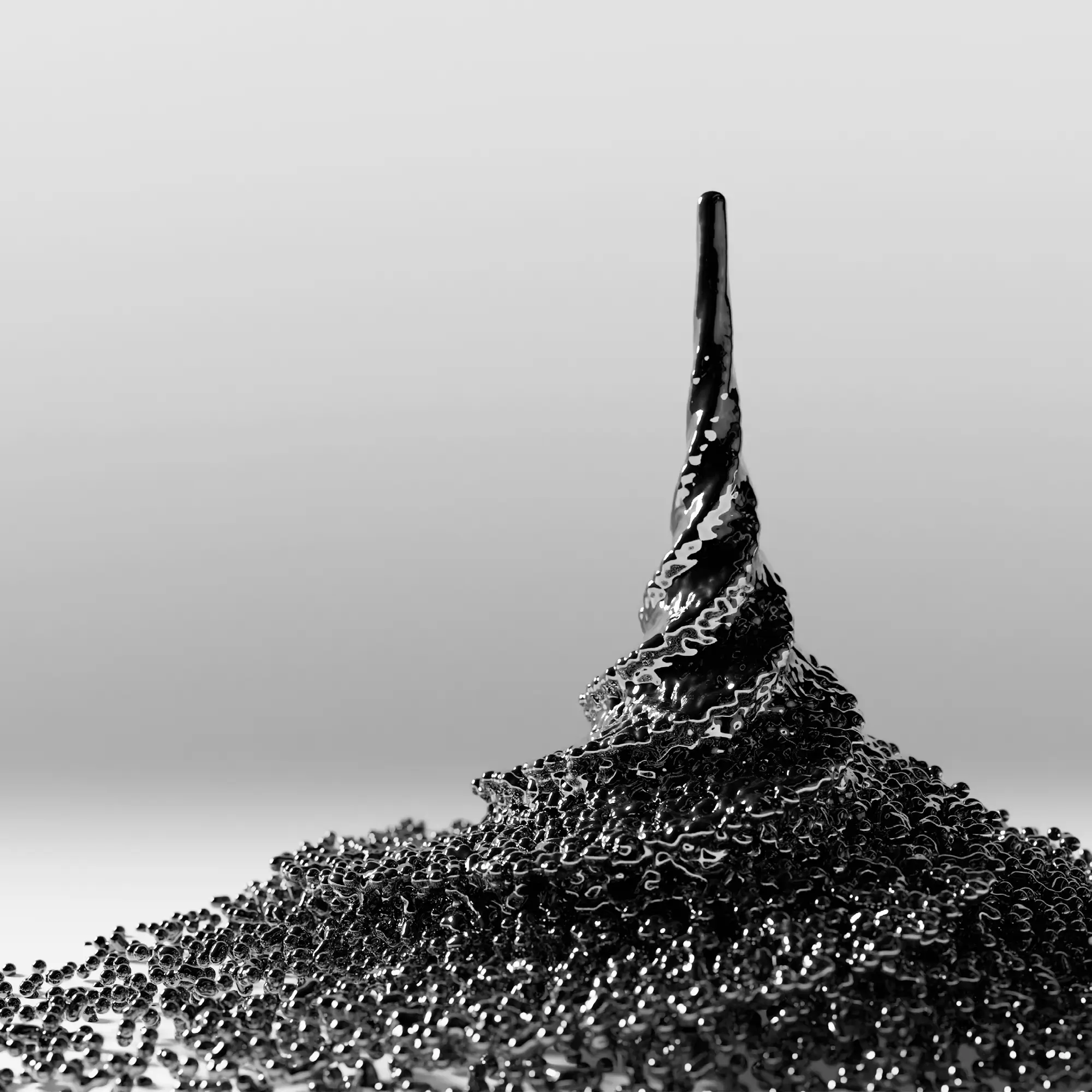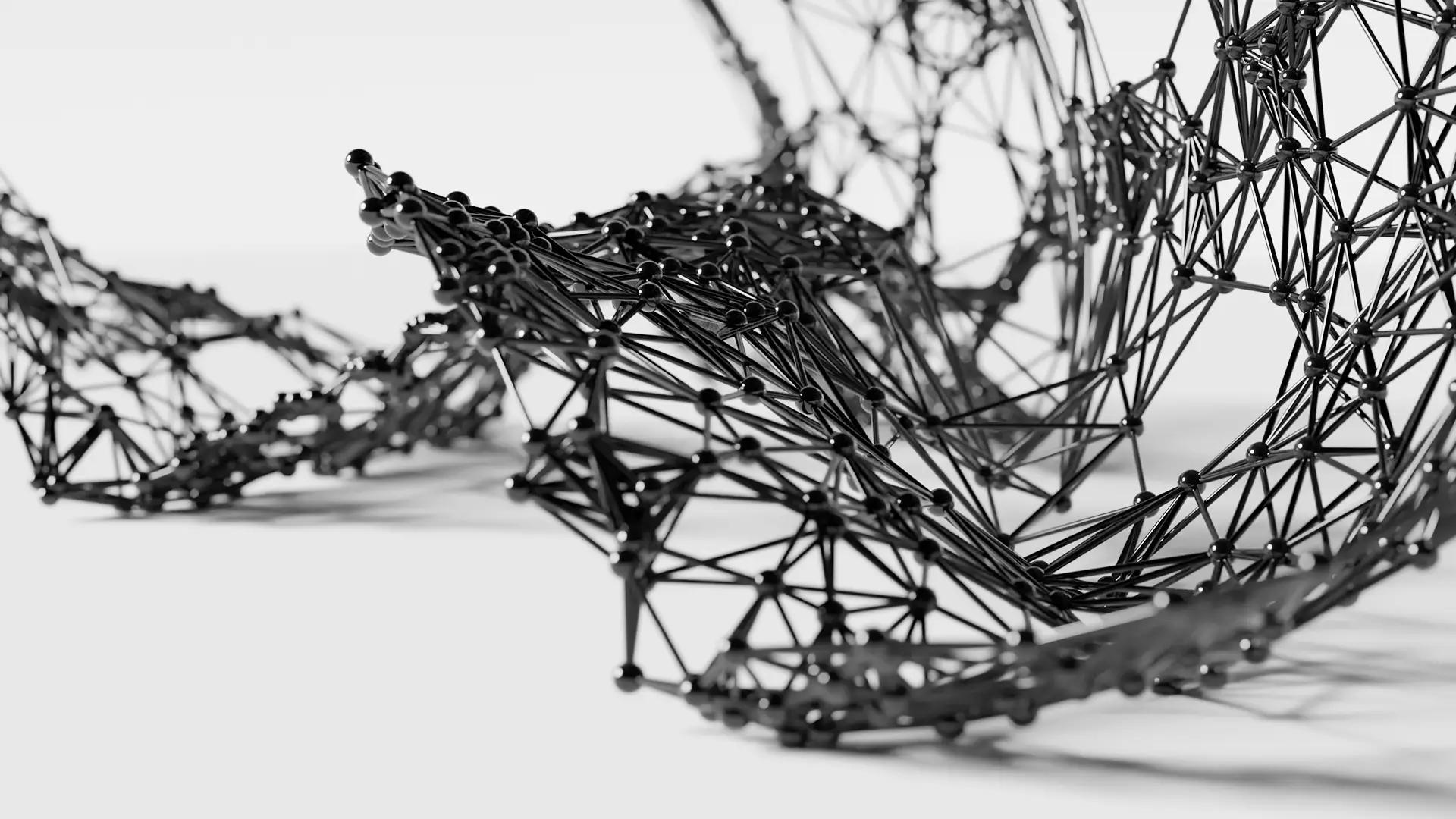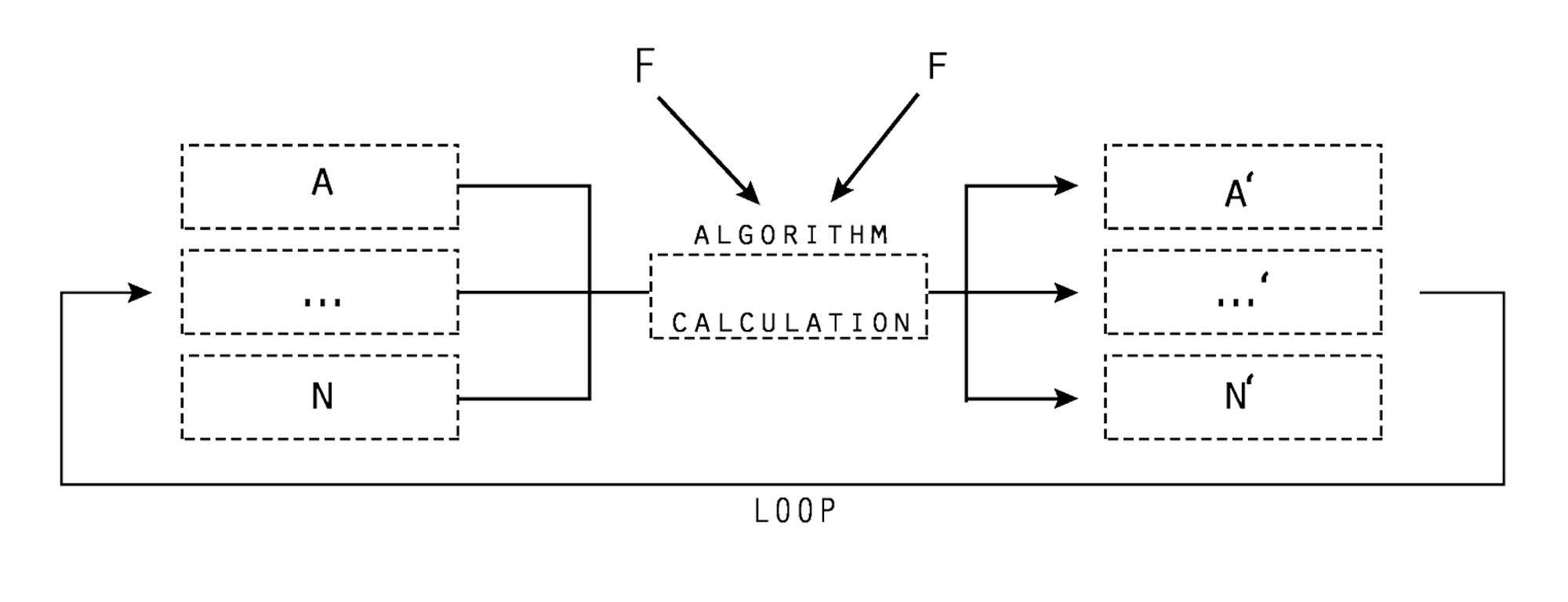Particle Sandbox
February 2020An urban network has properties of emergence meaning that the entity of a system shows characteristics that an individual part of it does not. Examples for emergence in nature would be weather phenomenons like storms, the swarm behaviour of fish or the fractal pat¬terns of snowflakes. Im¬portant for an emerging system is that the interacting parts must retain their independence while at the same time affect each other. Urban sprawl operates in the same manner. Each person behaves in their individual way but the entity of how urban networks are growing on a larger scale relies on the interconnection between all of them.
To create a system that takes these interconnections into account I used particles. This allows me to emit a large number of elements in a “digital Lab” that behave individually, can be controlled by a variety of forces and also interact with each other. Either they merge to an ensemble of a self-organizing geometry or they repel each other to symbolize counteracting properties of networks and generate new patterns.


In this “digital lab” particle systems are placed which represent different Networks. These networks range from microscopic organic networks to large scale river networks. For the development of an urban environment that interacts sustainable within its milieu all aspects have to be taken into account. That means that the algorithm has to be constantly adapted as the knowledge about the environment grows.


Applied on a topography each particle network is affected by different forces and the topography itself. In this way they reorganize and by connecting them they create optimized, self-organizing networks.
When overlapping human and non-human networks there are different areas where many particles accumulate to dense spots. In these areas it becomes clear that both networks strive to areas with high surface water deposit since both depend on it. Especially the accumulation of dense urban areas as well as agriculture have a significant negative impact on the water quality and therefore the entire biosphere downstream. To ease the tensions between human and non-human networks and their impact on the surface waters we have rethink the strategies of how water is being distributed.
This blog is an extract from the book Hydromorphology. To read the full book click on the link below.




